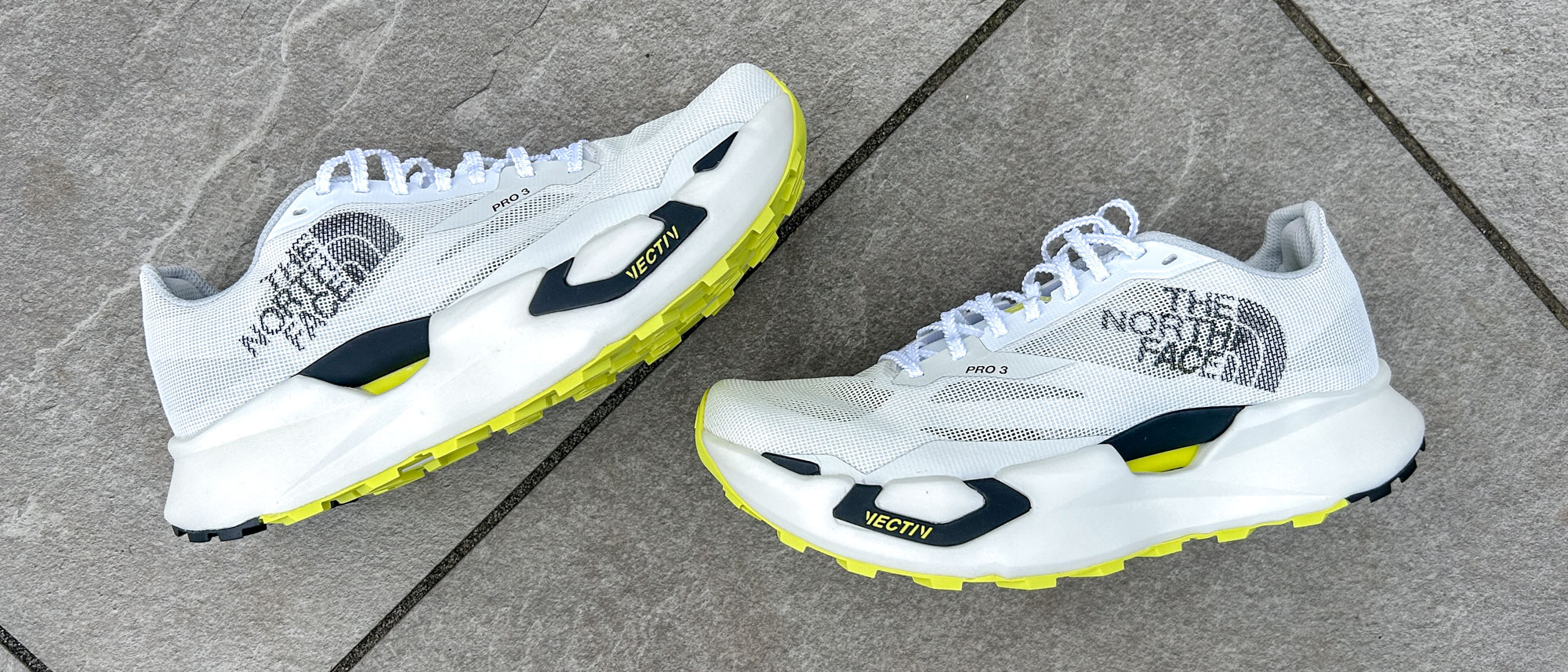Tom's Guide Verdict
Runners looking for a stable, comfortable trail-running shoe to cover epic distances will find it in the TNF Summit Vectiv Pro 3, but it’s not as fast and springy as some other trail super-shoes, and I'm not sure it justifies its high price
Pros
- +
Comfortable, smooth ride
- +
Stable for a high stack shoe
- +
Breathable, supportive upper
Cons
- -
Expensive
- -
Not as responsive as others
- -
Grip not great on soft ground
Why you can trust Tom's Guide
The North Face has been part of the vanguard bringing the tech from the best carbon plate running shoes from the roads to the trails. Its newest model, the TNF Summit Vectiv Pro 3, is the third generation of its high-end trail model.
While plates and tall, springy stacks of foam have yet to prove as reliable a hit on the trails as the road, some of the best trail running shoes use the tech to great effect, with the Hoka Tecton X3 and Adidas Terrex Agravic Speed Ultra standing out in particular.
After running 40 miles in the Summit Vectiv Pro 3 I would not say it’s as dynamic a racing shoe as those two, instead focusing more on comfort and stability.
It’s a shoe I’ve enjoyed running in, but in my The North Face Summit Vectiv Pro 3 review I’ll explain why I don’t think it will be worth the substantial outlay for most runners.
The North Face Summit Vectiv Pro 3 review: Price and availability
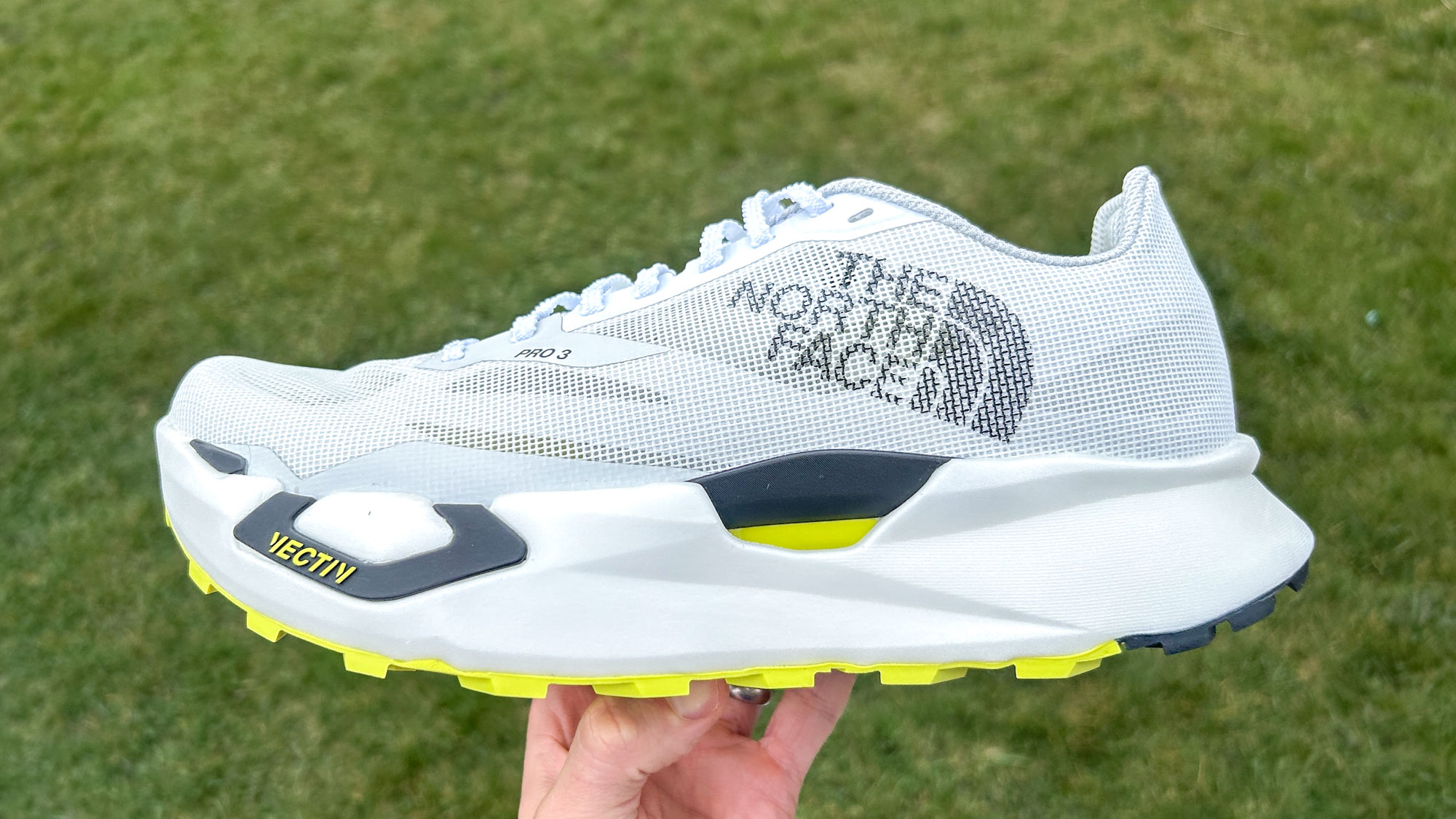
The TNF Summit Vectiv Pro launched in January 2025 and costs $250 in the U.S., and £225 in the U.K., the same price as its predecessor. It’s one of the most expensive trail shoes on the market, but the price is in line with other off-road carbon shoes like the Tecton X3 and Asics Metafuji Trail.
The North Face Summit Vectiv Pro 3 review: Design and fit
The Summit Vectiv Pro 3 is currently available in the White Ash/Sulphur Spring Green color I tested. I found the shoe had a comfortable roomy fit in my normal running shoe size.
It has a high midsole stack for a trail shoe, standing around 40mm tall at the heel (The North Face doesn’t give the exact stack height for the shoe). The Summit Vectiv Pro 3 has a heel-to-toe drop of 6mm.
The Summit Vectiv Pro 3 is not a lightweight shoe at 11oz in US men’s size 10, but given the high stack of foam and lugged rubber outsole, the weight isn’t unexpected.
Upper
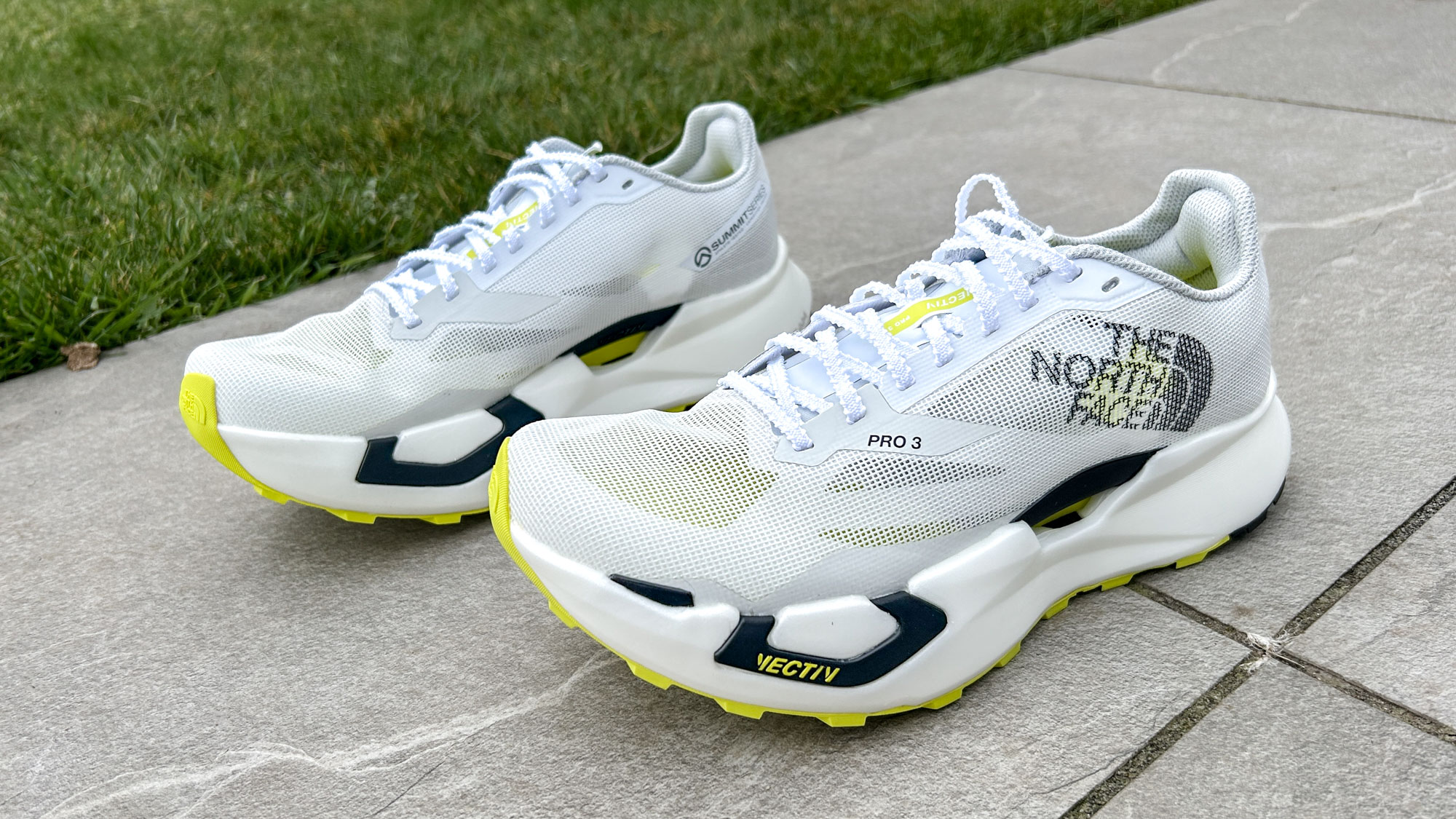
The seamless upper on the Summit Vectiv Pro 3 is made from a hydrophobic mesh to help it dry quickly in case you might have to run during rainy spells or splash through rivers.
It’s a lightweight and comfortable upper that breathes well in hot conditions, with just enough padding around the collar and tongue to be comfortable without feeling oppressive.
The thin mesh and minimal toe bumper means that it’s not the most protective upper though, especially when running on rocky terrain.
Midsole
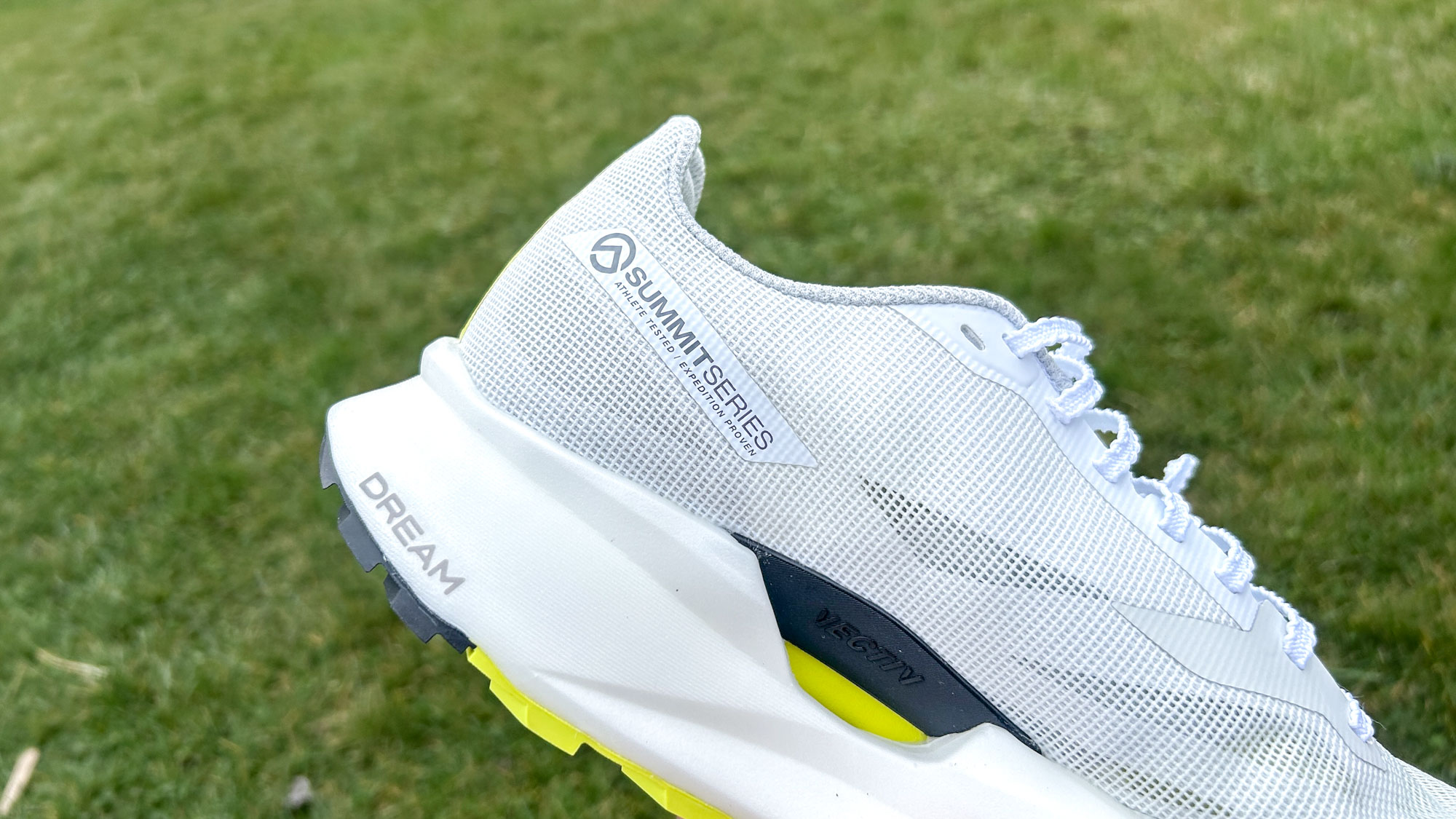
There’s a lot going on in the midsole of the Summit Vectiv Pro 3, which has two layers of foam and two plates.
The foam used is The North Face’s nitrogen-infused Dream material, with two layers of it sandwiching a full-length slotted carbon plate, which provides propulsion.
Another plate is used on the top of the midsole to create stability, with wings at the midfoot and forefoot to provide support on varying trail terrain.
Outsole

The SURFACE CTRL rubber outsole has 3.5mm chevron-shaped lugs on it. These are quite broad and designed mainly to grip well and provide a comfortable ride on harder, flatter ground, rather than biting into soft stuff.
The North Face Summit Vectiv Pro 3 review: Running performance
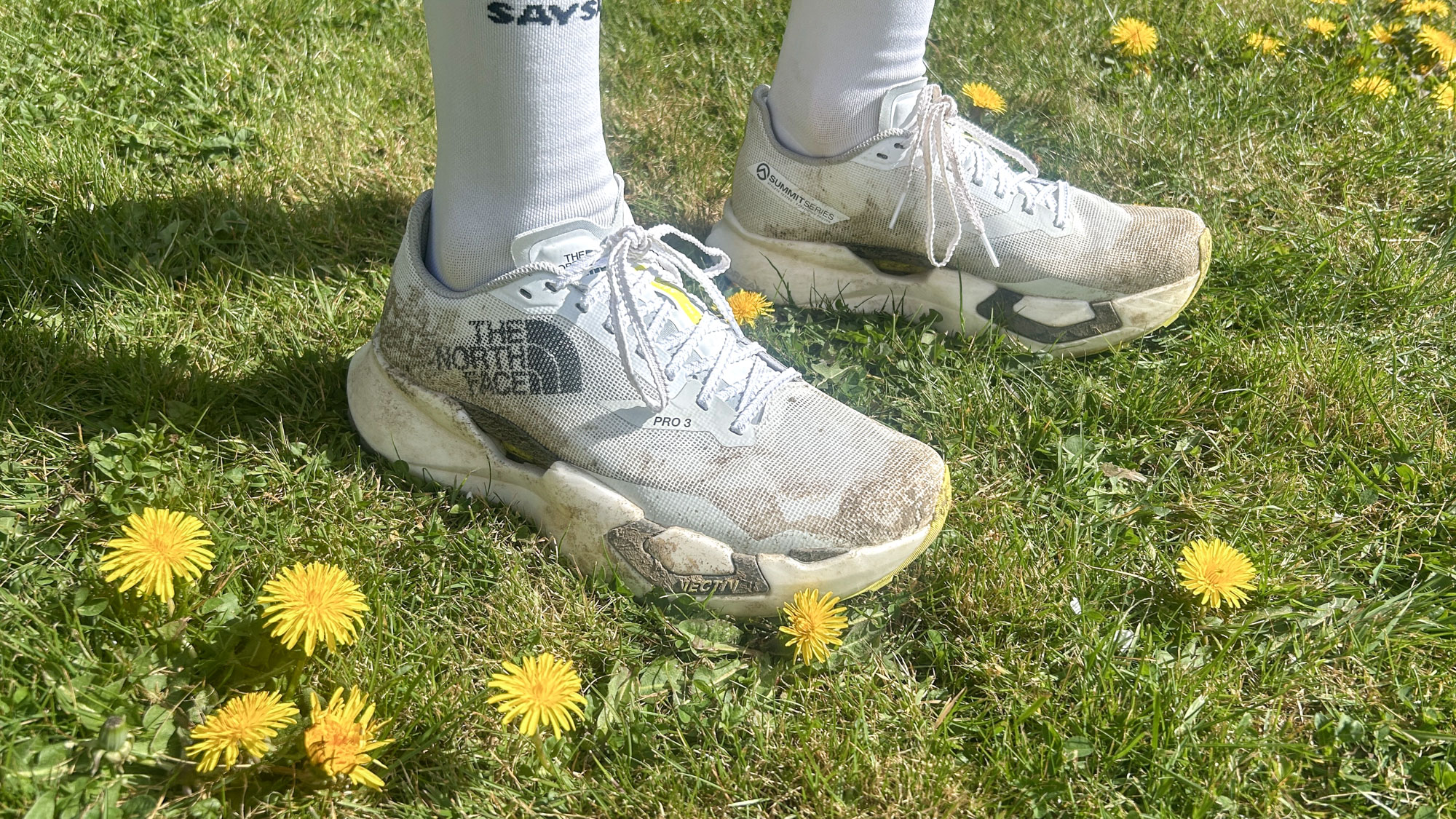
I’ve been testing the Summit Vectiv Pro 3 on a mixture of forest trails, including hard-packed dirt paths, grass, rooty single-track and a bit of mud, as well as roads to and from the trails.
The high stack of foam on the shoe delivers a lot of comfort and protection, noticeably on downhills and long runs, and while the foam isn’t as springy as the materials used in road super-shoes, the rocker on the midsole does move you along smoothly.
I enjoyed the shoe most when running at easy paces, especially recovery runs during my marathon training. No matter how stiff and tired I felt at the start of a run, I always felt better after my time on the trails on the Summit Vectiv Pro 3, which bodes well for its ultramarathon performance.
When I ran at faster paces in the shoe, however, it felt a bit big and heavy, especially up hills, and the foam didn’t deliver the responsive ride I hoped for and have felt with other trail super-shoes like the Hoka Tecton X3 and Adidas Terrex Agravic Speed Ultra.
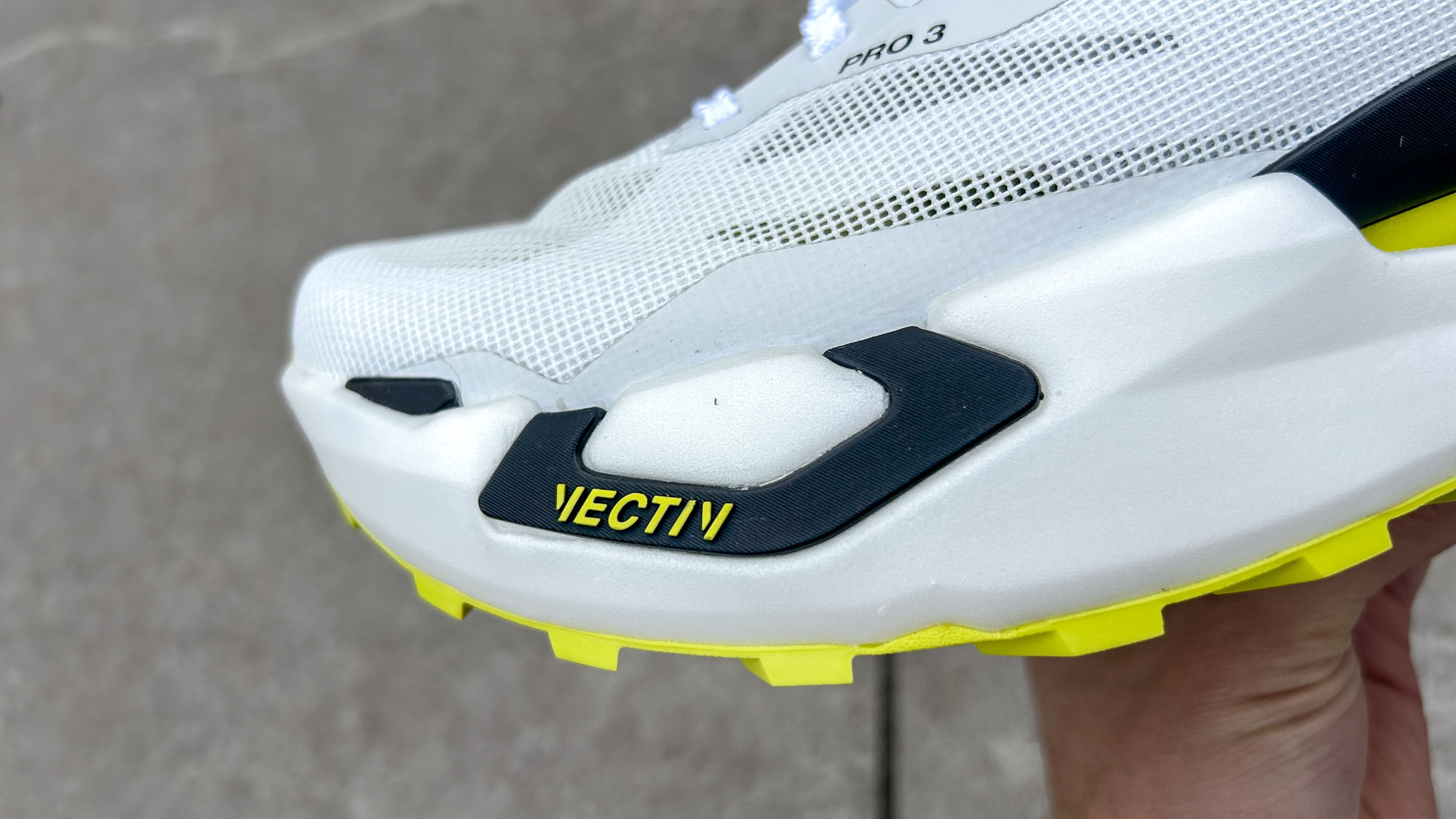
In addition, although the wide base of the shoe is enjoyably stable and cradles the foot nicely on well-groomed trails, it can catch the edge of rocks and roots when running on uneven ground — it’s a big shoe and you have to find the right place to land each time.
I also noticed that the wings used in the forefoot to add stability sometimes rubbed the inside of my left foot in particular, a problem I also had with the original Summit Vectiv Pro.
This mostly happened at faster speeds and there were runs where I didn’t notice the problem at all, but it would be a comfort concern if I was planning to use the shoe for an ultramarathon.
The outsole on the shoe performed pretty well for me during my testing on dry and mostly firmer trails, but it’s not designed to handle any kind of mud.
Should you buy The North Face Summit Vectiv Pro 3?
The Summit Vectiv Pro 3 has a lot of qualities that make it an attractive option for your longest runs on tamer trails. It’s comfortable and supportive, and will help you keep going thanks to the rocker and boost from the plate in the midsole.
However, it doesn’t feel the most agile or nimble shoe on trickier terrain, and the midsole is not as responsive and fast as with some other trail super-shoes, most notably the Hoka Tecton X3 , Adidas Terrex Agravic Speed Ultra and Asics Metafuji Trail.
The Summit Vectiv Pro 3 is a more stable shoe than those three, but for a trail racer you might well be prepared to sacrifice a bit of stability for the extra spring and speed you get from the Hoka and the Adidas in particular.
I found the Summit Vectiv Pro 3 more similar to the Nike Ultrafly, which is also comfortable and stable, but lacking a bit of punch at speed.
I’m not convinced it’s worth paying the high price for these shoes for most runners compared to picking up a comfortable non-plated trail shoe like the Hoka Speedgoat 6 for a lot less.
Ultimately while I enjoyed running in the Summit Vectiv Pro 3 I’m not sure all the tech and impressive materials used in its design have amounted to enough in terms of performance to justify its high price.

Nick Harris-Fry is an experienced health and fitness journalist, writing professionally since 2012. He spent nine years working on the Coach magazine and website before moving to the fitness team at Tom’s Guide in 2024. Nick is a keen runner and also the founder of YouTube channel The Run Testers, which specialises in reviewing running shoes, watches, headphones and other gear.
Nick ran his first marathon in 2016 after six weeks of training for a magazine feature and subsequently became obsessed with the sport. He now has PBs of 2hr 27min for the marathon and 15min 30sec for 5K, and has run 13 marathons in total, as well as a 50-mile ultramarathon. Nick is also a qualified Run Leader in the UK.
Nick is an established expert in the health and fitness area and along with writing for many publications, including Live Science, Expert Reviews, Wareable, Coach and Get Sweat Go, he has been quoted on The Guardian and The Independent.
You must confirm your public display name before commenting
Please logout and then login again, you will then be prompted to enter your display name.
